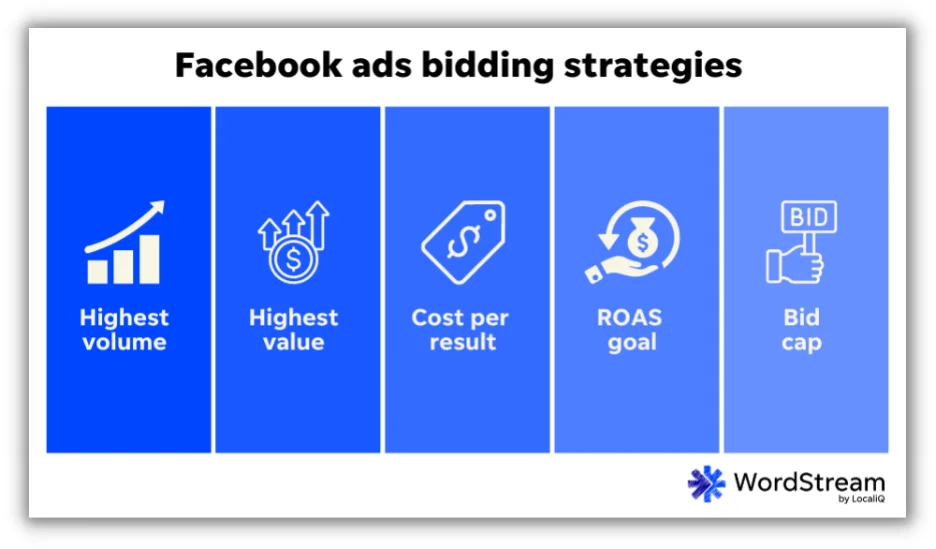No matter how small or large your business is, there’s almost certainly an option for you to run ads on the Meta Ads network, which includes Facebook, Instagram, and the Audience Network. A common next question is typically, “Great, how much will that cost?” and just like the answer in the Google Ads post earlier this year, the answer is “it depends.”
But just like that other post, that doesn’t mean this article is over. Far from it. So, let’s walk through the buying options for the Meta Ads platform, discuss a few controls you have at your disposal, then we’ll close out by talking about how your audience impacts your costs as well as this year’s benchmarks for costs by industry and how you can use those to estimate your own costs and/or results.
Contents
- How do you buy ads on the Meta Ads Network?
- How can you control your Facebook ads costs?
- How much do Facebook ads cost in 2024 (by industry)?
How do you buy ads on the Meta Ads Network?
There are a couple of different solutions for buying ads on the Meta Network.
First, and most common, is an auction. In this scenario, advertisers bid for an impression each time there’s an opportunity to show an ad to their target audience. Meta then weights three components, bid, estimated action rates, and ad quality, to determine whose ad will show in that placement. This will feel similar to search advertising for those who have done it before.
Second is reservation. Here, advertisers pay a fixed price to reliably target their audience. The biggest challenge is that this is only available for advertisers who want to reach 200,000 people or more, so it typically is a solution used by larger advertisers rather than smaller shops.
There is a third option called Target Ratings Points where Meta enables advertisers familiar with TV campaigns to plan and buy video campaigns using Nielsen-verified target rating points (TRPs) on Facebook and Instagram, but it’s not available to all advertisers.
For the majority of this post, we’ll be discussing the auction option and how that will impact your Meta Ads costs.
🚨 Facebook advertising is an important part of a successful marketing plan. Get our free guide >> 6 Simple Steps to a Complete Small Business Marketing Plan (+Template!)
How can you control your Facebook ads costs?
There are two key ways you’ll control your costs on the Meta Ads platform: budgets and bidding strategies.
Budgets and spending limits
You can set spending limits on Meta Ads campaigns in a handful of ways.
The first is the simplest and that’s with budgets at either the campaign or ad set level. This tells Meta how much you’re willing to spend on a given target audience and can be set up on a daily or lifetime basis.

Only have $5/day? That’s fine. You can use that. Have closer to $75,000/day? Don’t worry, they’ll take that too. But depending on how competitive your industry is, you may see varying degrees of effectiveness with your budget in any given space. Even if you set your budget to a lifetime setting, it’ll still average out to a daily budget.
There’s no right answer for what your budget should be. It all depends on your industry competitiveness, your audience size, your campaign goals, and what you can afford. Although it may take a certain amount of money to compete in a given space, I’ll contend that if you can’t afford it, then it doesn’t totally matter how good the results are.
The second level of control you have is with spending limits. These are a slight adjustment on budgets, but are still pretty simple to understand. Whether it’s at the campaign level or the account level, a spending limit is the maximum amount you want to spend on Meta Ads.

At the account level, the spending limit is designed to prevent your entire account from spending more than a certain amount in its lifetime. That includes all campaigns and ad sets.
This can be automatically set to refresh or you can tell it to refresh only when you manually update the spending limit.

A campaign spending limit has a similar function, but only limits the spend on an individual campaign in the account, but the spend is still accrued over its lifetime.
For either effort, you would then need to increase the spending limit to see that account or campaign begin serving ads again.
👀 Want to know what results you can expect from Facebook ads? Download our latest Facebook ads benchmarks!
Bid optimization
Each time an ad auction occurs for your target audience, your ad will be entered into the auction and you will put forth a bid to accompany your ads. Depending on the bid strategy you choose, your bid may be higher or lower and you can control the bid you enter.

There’s already a post you can check out here that has all the details for each bidding strategy and will help you choose which is right for you. For our purposes here, you need to know that each bid strategy will impact your bids differently and the major categories of the strategies.
The first two strategies in the image of five above (highest volume and highest value) are spend-based and will work to spend your entire budget while seeing results. This can be great if you need to keep costs consistent and are seeing good results.
The second set are cost per result and ROAS goal and those are goal-based. These strategies aim to hit your cost per goal or return on ad spend targets while keeping costs similar, but they will often underspend if they’re not meeting goals. These are great for ensuring you’re seeing profitability from your campaign, but there are limits. Try to set reasonable goals for these rather than bidding to the greatest returns. If the bidding algorithm doesn’t see results, it’ll stop serving your ads and then you’re not growing your business.
The last option is bid cap, which is a manual bid setting. Rather than set a target or just a daily budget, you set the actual bid you’ll place in the auction. These are really only meant for advertisers who are well-versed in their space and understand their conversion rates on Meta.
Depending on how competitive your industry is and what your KPIs are, you may need to choose a specific bidding strategy. Let’s start to talk about the benchmarks we’ve seen across different industries and what it may mean for you.
How much do Facebook ads cost in 2024?
Facebook ads can cost as much as $0.43 to $5.42 per click and $12.43 to $78.26 per lead. This varies by industry and objective.
This data is based on our Facebook ads benchmarks for a traffic objective and a lead generation campaign objective.
Each of these is categorically different as a traffic objective is working to drive as many users to your website as possible. Lead generation, on the other hand, is driving users to take a specific action such as a form fill, phone call, or website conversion, not just traffic to a site. These are more qualified types of traffic and can be trickier to achieve, which is reflected in a few of these stats. Let’s dive in a bit.
Here’s a look at the benchmarks for CPC and CTR for traffic campaigns.

Now, here’s a similar list of industries but looking at average cost per lead and conversion rate as well as average CPC and average CTR for the leads objective.

Some things that stand out:
- For nearly all industries, the CPC is lower for a traffic campaign than a lead generation campaign.
- CTR is also lower on traffic campaigns than it is for lead generation campaigns across all industries.
- The industries with the lowest CPCs tend to have lower CPAs, but that’s not always the case.
- CPLs vary widely from industry to industry.
Now you may look at this set of stats and think, “Why would I run a lead generation campaign if my CPCs are going to be higher?”
It’s for the same reason that the CTRs are also higher. When Facebook optimizes for a conversion rather than solely traffic, it’s much more selective with whom it serves ads. Especially if you’re using any sort of cost cap bidding, Facebook is trying to get you as many of your optimization results as possible for as cheap as possible. So if your main objective is conversions and you have reliable conversion tracking in place or are using lead generation forms, then you’re likely better off using a lead generation campaign objective.
My last takeaway from above is the one I want to end on: CPLs vary widely from industry to industry. Legal services, which are notoriously competitive, have the highest CPL at $78 with Health & Fitness and Physicians & Surgeons coming in a tie for second at $60.95.
But some industries are as low as $12.43, like Real Estate. That doesn’t mean these groups aren’t competitive. On the contrary, I’d argue that it’s more likely a function of audience than competition.
If you’re a search marketer, you’re likely used to trying to use long-tail keywords to get lower CPCs. After all, most of the competition is on the head terms or short tail keywords. Long tail is where you find incrementally cheap traffic because not as many users bid there.
But social advertising is different. It works in the opposite direction. The larger your audience, the cheaper it is to reach them.

According to Statista, Facebook has over 250 million users in 2024 and only 18.8% of them are below the age of 24, meaning 203.9 million are likely of an age that would be interested in buying a home. That’s a pretty wide range of users. I would assume (which we all know it’s not nice to do) that the same 203 million users likely aren’t all in need of a surgeon or a lawyer. That tends to be a smaller audience.
So whether you’re paying attention to your industry competitiveness and size, overall engagement, or simply trying to compare one audience in your account to the other, always remember that a larger audience is likely going to have a lower CPC than a smaller one since it’s easier to reach them.
Control your Facebook ads costs in 2024
There are any number of factors that will impact your Facebook advertising costs, but the good news is that you have quite a lot of control, from your target audience, your campaign objective, and all the budget and bidding controls. These industry benchmarks can help you understand how you’re stacking up to the competition and likely forecast how much you should be spending a month, but don’t let them constrain you too far. Make sure you’re following your own profitability metrics and getting the most from the platform, and use these tips from Facebook ad pros to get even better results.






